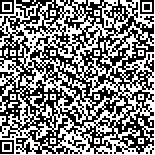下载中心
优秀审稿专家
优秀论文
相关链接
摘要

提出研究遥感立体像对的压缩问题。主要讨论了左右影像的视差补偿和辐射补偿。针对遥感立体像对视差分布不均以及左右影像存在辐射差的特点,提出了一种基于立体补偿的遥感立体像对压缩算法。该算法以左片为基准图像,采用自适应视差估计计算出右片的视差矢量,结合辐射校正和重叠块视差补偿技术得到平滑的右片的预测图像,以右片减去预测图像得到残差图像,然后采用小波压缩算法对残差图像进行压缩。实验结果表明,该算法能显著提高遥感立体像对的压缩性能。
This paper addresses the problem of stereo image pair compression in remote sensing applications. Three fundamental techniques including Disparity Compensation (DC) , Radiation Compensation ( RC) and the compression of residual image are discussed. The main issue of stereo image compression is the estimation of disparity between the left frame and the right frame, a problem similar to the estimation of motion vectors in video coding. Since the disparity consisting in remote sensing image pairs are caused by variation in elevation rather than motion of the some objects, it is generally more universal and complex than the motion vectors. However, due to the geometrical constraint between the two frames, the vertical disparity vectors of remote sensing stereo image pairs can always be eliminated by a certain relative-orienting method. Besides stereo disparity, the average grayscale difference between corresponding blocks is also a big obstacle for creating accurate predictive image, for the two frames of a remote sensing image pair usually have considerable luminance disparity due to the changing in photograph angle and incidence angle. To fully exploit the redundancy between the two frames, a Stereo Compensation (SC) technique combining adaptive DC with RC is presented in this paper. It shows good performance in predicting the right frame from the left frame. A high-performance integer wavelet image coder is utilized for the compression of residual image. Experiments show that the SC-based compression algorithm for remote sensing stereo image pair is about 5% and 30%-45% more efficient than JPEG2000 in lossless compression and lossy compression respectively.

